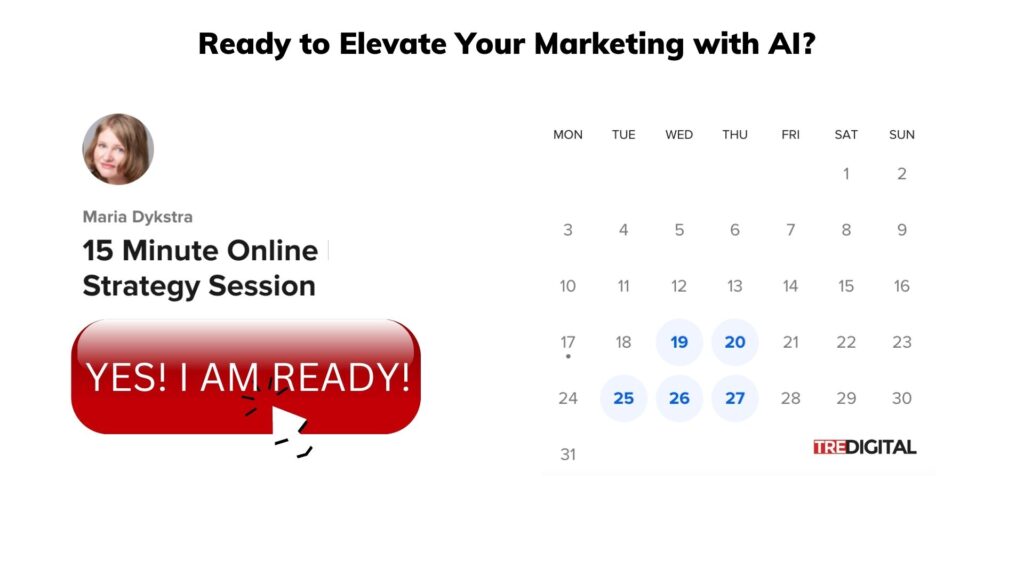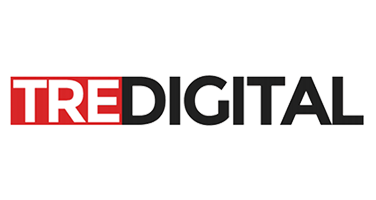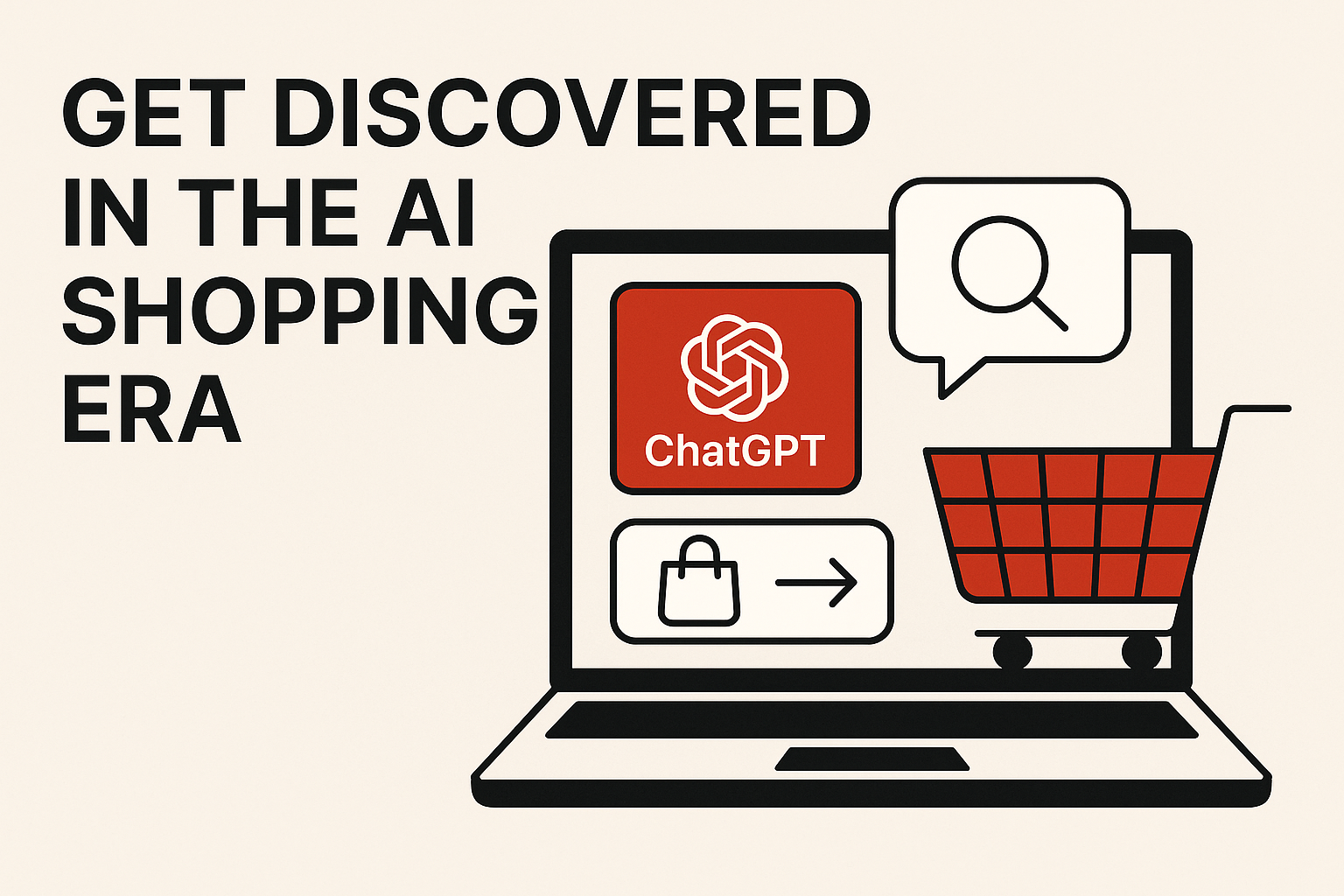Like it or not, AI is here to stay.
According to a survey by Salesforce, 84% of marketers use AI in some form. Another study by Markets and Markets estimates that the global AI in the marketing market will grow to $40.09 billion by 2025.
But AI in marketing is still a relatively new trend, and many businesses may not have fully integrated it into their marketing efforts yet.
AI helps us make smarter decisions, improve customer engagement, and increase efficiency in marketing efforts.
Table of Contents
Toggle1- Personalized marketing
Are you tired of generic, one-size-fits-all marketing messages that don’t speak to your unique needs or interests?
Well, personalized marketing is here to change the game! Imagine receiving an email that not only addresses you by name but also recommends products based on your previous purchases or browsing history.
Or visiting a website that showcases content and products specifically tailored to your tastes and preferences.
Personalized marketing is all about using data-driven insights to create a one-of-a-kind experience for each individual customer. It’s about understanding your needs and desires and delivering the right message at the right time.
AI is a huge help for personalized marketing. You can start by analyzing massive amounts of customer data to understand their preferences and behaviors. Then create specific marketing campaigns that resonate with your audience. Your customers can experience a whole new level of engagement and satisfaction with personalized marketing.
If you want to stay ahead of the curve, you need to say goodbye to generic marketing and hello to customized experiences that speak directly to your customers.
With the right tools and strategies, you can unlock a whole new level of engagement and customer loyalty. From email campaigns to targeted advertising, the possibilities are endless.
Some of the AI tools to mention:
Dynamic Yield uses AI to analyze customer data and behavior to create personalized experiences across multiple channels, such as email, web, and mobile.
Segment is the platform that helps businesses collect, clean, and analyze customer data to create targeted marketing campaigns.
Ideas for personalized marketing
By tailoring your approach to each individual customer, you can create a unique and memorable experience that will keep them coming back for more. From customized email campaigns to personalized content, the opportunities are endless. So let’s explore some exciting ideas to help you stand out from the crowd and make a lasting impression on your audience!
- Personalized email campaigns: Most of the emails you receive are personalized by using customers’ first names in the subject line or body of the email. You can take it one step further by recommending products or services based on their previous purchases or browsing history, or sending reminders for abandoned shopping carts.
- Customized product recommendations: If you run an e-commerce site, look into machine learning algorithms to recommend products to customers based on their previous purchases, search history, or other browsing behaviors.
- Personalized content: Create personalized content such as blog posts, social media messages, or videos that speak directly to a particular customer segment, based on their interests or preferences.
- Personalized landing pages: Introduce personalized landing pages that are tailored to specific customer segments or personas, featuring products or content that are more likely to resonate with them.
- Personalized retargeting: use retargeting techniques to personalize ads to customers who have previously interacted with their brand, such as displaying ads for previously viewed
2 – Predictive analytics
Predictive analytics is the crystal ball of marketing.
By analyzing historical data and using statistical algorithms and machine learning techniques, you can forecast future trends, behaviors, and outcomes with remarkable accuracy. From identifying high-value customers to optimizing marketing campaigns, the potential applications are vast.
So if you’re ready to stay one step ahead of the competition and make data-driven decisions, get ready to dive into the world of predictive analytics!
Predictive analytics tools are the secret weapon of savvy marketers.
By leveraging powerful algorithms and machine learning techniques, you can unlock insights and forecast future trends with unparalleled precision. From optimizing marketing campaigns to identifying hidden opportunities, the possibilities are endless. So if you’re ready to harness the power of data and take your marketing strategy to the next level, it’s time to explore the world of predictive analytics tools.
For example,
IBM Watson Analytics uses AI to help businesses identify patterns in customer data and make predictions about future behavior.
Google Analytics is an everyday web analytics tool that can also use AI to identify trends and provide insights into customer behavior.
How can predictive analytics help your business?
- Identify high-value customers: identify customers who are most likely to make repeat purchases or become loyal brand advocates. By focusing your efforts on these high-value customers, you can maximize your ROI and build a strong customer base.
- Optimize marketing campaigns: Use predictive analytics to identify which channels, messages, and offers are most likely to resonate with your target audience. Allocate your marketing budget more effectively and increase conversion rates.
- Forecast inventory needs: Get better at forecasting future demand for your products to optimize your inventory levels and avoid overstocking.
- Identify cross-selling opportunities: Identify which products are most likely to be purchased together. Create targeted cross-selling campaigns and increase your average order value.
- Predict customer churn: Learn which customers who are at risk of churning and take proactive measures to retain them. This can include targeted promotions, personalized outreach, or improved customer service.
- Optimize pricing strategy: Fine-tune your pricing strategy by predicting how changes in price will affect customer demand and revenue. Find the sweet spot between maximizing revenue and maintaining customer loyalty.
- Improve website personalization: Personalize your website content and product recommendations based on each individual customer’s preferences and behaviors.
3 – Chatbots
Chatbots are the new frontier of customer service.
By leveraging the power of artificial intelligence and natural language processing, chatbots can provide instant support and personalized interactions with your customers. From answering FAQs to guiding customers through the sales process, chatbots can save time, reduce costs, and improve the overall customer experience.
So if you’re ready to take your customer service to the next level, it’s time to explore the world of chatbots in business!
Chatbot tools are the must-have technology for any business looking to streamline customer service and improve engagement. With powerful AI algorithms and natural language processing, chatbot tools can handle customer inquiries 24/7, freeing up your team to focus on more complex tasks.
For example,
ManyChat helps you create chatbots for Facebook Messenger, SMS, and other messaging platforms.
Dialogflow is a Google-owned platform that uses AI to create conversational interfaces for chatbots and voice assistants.
From automated customer support to personalized sales conversations, chatbot tools can help you save time, reduce costs, and increase customer satisfaction. So let’s explore some of the top chatbot tools available and unlock the full potential of this game-changing technology!
- Automate customer support: Chatbots can handle common customer inquiries. They can help with checking on order status, shipping information, and returns freeing up your team to focus on more complex issues.
- Qualify leads: Chatbots can ask qualifying questions to potential customers and direct them to the right resources or salesperson.
- Schedule appointments: Chatbots can help schedule appointments or consultations, eliminating the need for phone or email correspondence.
- Offer personalized recommendations: Chatbots can recommend products or services based on customer preferences, browsing history, or purchase history, increasing the likelihood of a sale.
- Send targeted promotions: Chatbots can send personalized promotions to customers based on their interests, past purchases, or behavior on your website.
- Collect customer feedback: Chatbots can solicit feedback from customers and provide valuable insights to help improve your business.
- Provide 24/7 support: Chatbots can provide support around the clock, ensuring that your customers always have access to assistance, even outside of business hours.
4- Image and video recognition
Image and video recognition technology is revolutionizing the world of marketing for small businesses.
By using advanced algorithms to analyze visual content, you can gain valuable insights into customer preferences, sentiment, and behavior. From personalized recommendations to targeted ad campaigns, image and video recognition technology help businesses create more engaging, effective, and profitable marketing strategies.
So if you’re ready to take your marketing to the next level, these tools can help you explore the power of image and video recognition technology
Brandwatch is a social media monitoring tool that uses AI to identify brand mentions and user-generated content on platforms like Twitter and Instagram.
Google Cloud Vision API helps you with analyzing images and videos to identify objects, people, and actions.
How can you integrate image and video recognition technology into your marketing?
- Create personalized recommendations: analyze customer preferences and recommend products or services that are tailored to their interests and needs.
- Optimize ad targeting: study the content of images and videos to determine the most relevant target audience for your ads.
- Improve social media engagement: Review social media posts and comments to provide valuable insights into customer sentiment and preferences, and tailor your content to better resonate with your audience.
- Streamline product search: allow customers to search for products using images, making the shopping experience faster and more intuitive.
- Enhance product descriptions: generate detailed product descriptions based on images.
- Improve inventory management: analyze images of your inventory to track product availability and provide real-time updates to customers.
- Create personalized content: generate personalized content for customers based on their preferences and behavior, improving the overall customer experience and increasing engagement.
5 – Voice assistants
The era of voice assistants is here, and you have a unique opportunity to take advantage of this cutting-edge technology to create exciting and innovative marketing strategies!
With just a few words, your customers can interact with your business and receive instant support, recommendations, and promotions. Voice assistants offer a whole new level of convenience and personalization, allowing you to forge deeper connections with your customers and drive revenue growth.
From voice-activated promotions to personalized recommendations, these voice assistants can help businesses improve customer experiences, increase brand awareness, and drive sales.
Amazon Alexa Skills Kit allows you to create custom skills for the Amazon Echo and other Alexa-enabled devices.
Google Actions is a platform for creating custom actions for Google Assistant.
Introduce voice activities for your customers:
- Create voice-activated promotions: Offer special deals and discounts that customers can access simply by asking their voice assistant.
- Streamline customer support: Use voice assistants to provide instant answers to common customer inquiries, reducing wait times and improving customer satisfaction.
- Automate routine tasks: Delegate repetitive tasks like appointment scheduling, order tracking, and payment processing to voice assistants.
- Improve accessibility: Voice assistants can make your business more accessible to customers with disabilities or language barriers, opening up new markets and improving inclusivity.
- Enhance the customer experience: Provide a seamless and engaging experience for customers via assistants, from personalized greetings to interactive quizzes and games.
CONCLUSION
The use of AI in marketing is rapidly transforming the way small businesses reach and engage with their customers. With AI-powered tools like personalized marketing, predictive analytics, chatbots, image and video recognition, and voice assistants, you can create more targeted, effective, and personalized marketing strategies than ever before.
Don’t be left behind -harness the power of AI to optimize your marketing efforts, increase customer satisfaction, and drive revenue growth.










